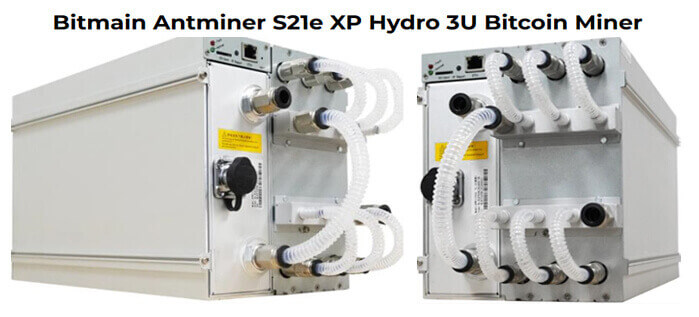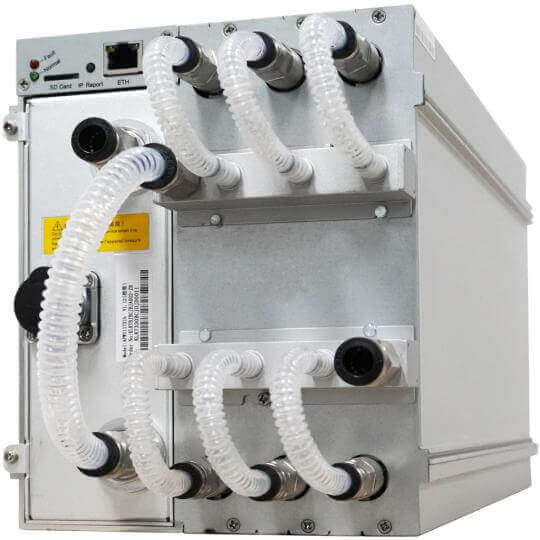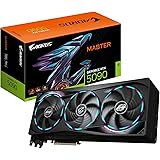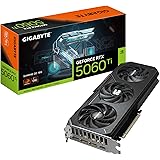The Antminer S21e XP Hydro 3U, launched by Bitmain in November 2024, emerges as a significant player in the cryptocurrency mining field. It is a noteworthy model produced by Bitmain, a leader in cryptocurrency mining technology. In this post we will explore the specifications and features of this mining rig, the significance of its performance in the cryptocurrency market, the technological advancements it brings to mining, and the implications for future developments in this industry. Additionally, this post will provide a thorough analysis of the current mining landscape, including key figures and researchers who have driven the evolution of cryptocurrency mining technology.
Historically, the evolution of mining hardware has seen a significant shift from CPU and GPU mining to more specialized equipment such as ASIC miners. The introduction of ASIC miners marked a pivotal moment for the cryptocurrency mining community. For instance, the early days of Bitcoin mining allowed enthusiasts to use personal computers and graphics cards. However, as the network grew and mining difficulty increased, the need for more efficient hardware became evident. ASIC miners, which stand for Application-Specific Integrated Circuits, are tailored specifically for mining cryptocurrencies, providing them with a competitive edge in terms of speed and energy consumption.
The Antminer S21e XP Hydro operates under the SHA-256 algorithm, a cryptographic function pivotal to Bitcoin mining. With a remarkable maximum hashrate of 860 Th/s and a power consumption of 11180 W, it stands out among its peers. Such specifications indicate that it has the potential to yield high earnings for miners, particularly in an environment characterized by increased competition and the ever-evolving nature of cryptocurrency mining.
When analyzing the specifications closely, several critical aspects should be addressed. The size of the Antminer S21e XP Hydro measures an impressive 900 X 486 X 132 mm. This dimension makes it a substantial piece of equipment suitable for serious miners, whether they are operating from a large facility or a dedicated mining room. Its weight at 18,000 g indicates robust construction. The inclusion of hydrocooling is a significant feature, as it represents a major advancement in cooling technology. Cryptocurrency mining is known for generating excessive heat, and efficient cooling becomes paramount to ensure the longevity and performance of mining rigs.
Effective cooling solutions have always been a critical aspect of mining hardware, as overheating can lead to hardware malfunctions and decreased mining performance. The hydro cooling system utilized in the S21e XP Hydro 3U is designed to keep the rig operating at optimal temperatures, thereby enhancing its longevity and efficiency. Hydro cooling technology employs water as a cooling medium, which can absorb heat more effectively than air-based cooling systems. This design choice reflects a growing trend among manufacturers to innovate in cooling techniques to address the heat generated by high-performing mining rigs.
The networking connection mode of the Antminer S21e XP Hydro uses RJ45 Ethernet at speeds of 10/100M. This ensures a stable and reliable connection to the internet, which is essential for real-time mining. The operational voltage ranges between 380-415V, facilitating the use of this equipment in various electrical environments worldwide. However, with the power consumption of 11180 W, miners must consider both the electricity costs and the availability of electrical infrastructure.
Environmental factors play a crucial role in the operation of the Antminer S21e XP Hydro. The device can function effectively in a temperature range of 20-50 °C while withstanding storage temperatures between -20 and 70 °C. Additionally, it operates under humidity levels from 10-90%, making it extremely versatile in varied environments. Such specifications ensure that the device can operate efficiently in different geographical locations, enhancing its marketability and utility.
The Antminer S21e XP Hydro stands as a testament to Bitmain’s innovative spirit and commitment to producing cutting-edge technology for the cryptocurrency sector. To fully appreciate its significance, it’s essential to consider the broader context of cryptocurrency mining’s evolution. From the early days of mining conducted on personal computers to the advent of massive mining farms with specialized hardware, the shift toward efficiency and power is evident.
One of the standout features of the Antminer S21e XP Hydro is its low noise operation, functioning at a whisper-quiet 50 dB. This low noise level is particularly beneficial for individual miners or small-scale operations that may be situated in residential areas. The ability to maintain a quiet working environment while still reaping the rewards from mining activities cannot be understated. Traditional mining rigs are often associated with loud fans and cooling systems, which can be disruptive. In contrast, this model adheres to a quieter profile, making it more accessible for a wider range of users.
A Powerful Mining Machine
An influential figure in this evolution is Jihan Wu, co-founder of Bitmain. His strategic insights and dedication to advancing mining technology have significantly influenced the industry. Under his leadership, Bitmain has produced several models of miners which set benchmarks for performance and efficiency. The introduction of hydrocooling technology within devices like the Antminer S21e XP Hydro can also be attributed to efforts made by researchers and engineers seeking to address the pressing challenge of heat generation in mining.
In discussing influential individuals in cryptocurrency mining, one cannot overlook the role of Satoshi Nakamoto, the pseudonymous figure behind Bitcoin’s inception. Satoshi’s vision for a decentralized currency system sparked a movement that has now evolved into a global industry. Following Nakamoto, figures like Roger Ver and Vitalik Buterin have significantly influenced the cryptocurrency and blockchain technology landscape. Bitmain’s co-founders, Jihan Wu and Micree Zhan, also play a critical role in shaping mining hardware production and facilitating the evolution of Bitcoin mining technology, which culminates in devices like the Antminer S21e XP Hydro 3U.
The implications of high-performance miners like the Antminer S21e XP Hydro extend beyond individual miners. They impact the entire cryptocurrency ecosystem. When more miners are able to participate in network validation, it strengthens the decentralization aspect of cryptocurrencies. However, it also introduces challenges, such as increased power consumption and its environmental impact. Critics argue that the energy-intensive nature of cryptocurrency mining poses risks to sustainability. Consequently, the industry faces growing scrutiny from environmental advocates and regulatory bodies.
The perspectives on the environmental impact of cryptocurrency mining vary significantly. Advocates highlight the potential for renewable energy sources to fuel mining operations, thus reducing the carbon footprint. For instance, regions rich in hydroelectric power have become hotspots for mining farms because the cost of electricity is considerably lower. This transition towards greener energy solutions aligns with global efforts to combat climate change and shift towards sustainable practices.
On the other hand, detractors point out that the majority of mining operations still rely on fossil fuels, contributing to pollution and excessive energy consumption. Recent trends suggest a balancing act is required for the cryptocurrency world. To maintain market growth while addressing environmental concerns is essential. The Antminer S21e XP Hydro could be part of this solution by incentivizing miners to adopt more efficient technologies and potentially consider renewable energy sources due to its improved performance.
The 13 J/Th efficiency rating of the S21e XP Hydro 3U places it among the leading contenders in the market, demonstrating a commitment to reducing electricity consumption per terahash mined. This aspect is crucial as miners balance profitability with sustainability, especially in regions where electricity is a significant operational cost.
Numerous perspectives exist regarding mining practices and their long-term viability. While some advocate for the continued development of more efficient hardware to alleviate energy concerns, others emphasize the need for a broader systemic change in how cryptocurrencies are mined and utilized. For example, transitioning to renewable energy sources, such as solar or wind, could mitigate the environmental footprint of mining operations. Additionally, there is a growing discourse on the necessity for regulatory frameworks to govern mining practices and address sustainability concerns effectively.
The evolution of cryptocurrency has given rise to new business models and opportunities. Individuals and companies are continually seeking ways to make mining more profitable. The ability of the Antminer S21e XP Hydro to deliver a high hashrate against its power consumption means potential profit margins for users may be a lot more favorable. This high-efficiency model represents a step toward economic viability and operational sustainability.
Going forward, we must consider how advancements in technology will influence the future of mining hardware. Potential developments may include improved cooling systems, more efficient power management techniques, and the integration of artificial intelligence to optimize mining operations. Considering the technical specifications of mining equipment like the Antminer S21e XP Hydro, future models may push the boundaries of efficiency while minimizing environmental impact.
Emerging blockchain technologies, including those addressing scalability and transaction speed, will likely change how miners operate. The potential transition to Proof of Stake models in some cryptocurrencies presents questions about the future of mining practices. If the network consensus shifts from Proof of Work, which is reliant on mining hardware, there may need to be a reevaluation of investments in equipment such as the Antminer S21e XP Hydro.
The Antminer S21e XP Hydro emerges as a powerful player in the cryptocurrency mining landscape. Its sophisticated features and specifications not only make it a high-performing unit but also render it a critical consideration for serious miners looking to optimize their operations. Bitmain’s forward-thinking approach exemplifies the innovative mindset required to thrive in this rapidly changing environment. Gleaning insights from influential figures in the industry and addressing the diverse perspectives surrounding the environmental implications only enriches our understanding of where cryptocurrency is headed.
As miners and stakeholders prepare for a future intertwined with technological progress and the necessity for sustainable practices, the Antminer S21e XP Hydro serves as a compelling case study. It showcases the interconnectedness of power, efficiency, and impact within the realms of cryptocurrency, technology, and the environment. Future developments will continue to hinge upon balancing profitability with ethical responsibilities, ensuring the cryptocurrency mining industry’s growth does not come at an unsustainable cost.
Antminer S21e XP Hydro 3U Efficiency, Durability, and Future Prospects
The profitability of mining operations remains a primary concern for miners weighing the costs of electricity, hardware, and other expenses. Utilizing platforms such as NiceHash allows miners to convert their hashing power into earnings seamlessly.
In terms of profitability, the Antminer S21e XP Hydro presents a compelling case for miners. When assessed using NiceHash, the income generated from this mining setup can be substantial. The reported earnings of approximately 45. 38 USD per day to over 1400 USD over different periods, depending on market conditions and the sale of BTC. It translates to a significant return on investment, particularly in the current cryptocurrency market. Earning 0. 00040260 BTC daily indicates the realistic potential for a miner to see a viable profit, given the right market conditions. The figures suggest that different setups can yield variable profits, connecting specific configurations with their corresponding earnings.
For instance, a miner using the Antminer S21e XP Hydro could expect approximate income ranging from 45. 38 USD per day to over 1400 USD over different periods, depending on market conditions and the sale of BTC. The ability to estimate earnings accurately can significantly inform decisions regarding the investment in mining equipment. Therefore, the S21e XP Hydro does not only excel in technological aspects, but it also provides significant insights for financial planning in mining ventures.
Bitcoin Cash (BCH) currently holds a significant position among SHA-256 coins. With a market cap of around 11. 94 billion dollars, it boasts a 24-hour volume of 121. 45 BTC, showcasing strong trading activity. The estimated daily revenue from mining Bitcoin Cash is about 47. 13 dollars. Although this figure fluctuates with market conditions, BCH remains a notable contender with an appealing profit of approximately 20. 30 dollars per day.
Another cryptocurrency to consider is Fractal Bitcoin (FB). This coin’s market cap, around 38. 22 million dollars, shows that it is significantly smaller than others but still provides mining potential. The estimated revenue is slightly lower than BCH, at around 46. 79 dollars per day, yielding a profit of about 19. 96 dollars. This may attract miners looking for alternative yet viable options within the SHA-256 algorithm framework.
DGB-SHA (DGB), with an extensive market cap of 155. 33 million dollars, also presents promising rewards for miners. The estimated daily revenue is about 37. 44 dollars, which translates to a profit of roughly 10. 60 dollars per day. While the profit margins may not be as high as some larger coins, the lower competition could lead to more consistent mining returns. This reflects a growing trend were smaller, less-known coins can offer profitability due to their untapped market presence.
Bitcoin (BTC), the most recognized cryptocurrency, provides enormous trading volume and market stability, with a staggering market cap of over 2. 26 trillion dollars. Its mining potential is unarguably the most significant within the SHA-256 coin category. The estimated daily revenue from BTC mining can reach up to 45. 87 dollars, with a daily profit of approximately 19. 04 dollars. The high market volume underscores the resilience and ongoing interest in Bitcoin, making it a primary choice for miners.
Another option is eCash (XEC), which has a market cap of approximately 404. 95 million dollars. This coin has an estimated revenue of around 44. 32 dollars per day, leading to a profit nearing 17. 49 dollars. Although it may not outperform the leading coins, it proves to be a viable option for miners looking for diversity in their portfolios.
Lastly, Peercoin (PPC) carries a market cap of about 9. 16 million dollars, with estimated earnings around 44. 36 dollars, producing a profit of about 17. 53 dollars daily. Despite being lower in market cap compared to others, Peercoin highlights the potential for varied income streams depending on mining strategies.
The durability and reliability of the Antminer S21e XP Hydro cannot be overlooked. The rig is built to withstand the rigorous environment typically associated with cryptocurrency mining. Mining operations often involve extended hours of continuous usage, leading to wear and tear on less durable equipment. The S21e XP Hydro is engineered to ensure consistent performance over time, which means that miners can depend on it for daily operations without the frequent need for maintenance or replacements. This robustness is a significant drawing point for both individual miners and those operating farms with multiple mining rigs.







